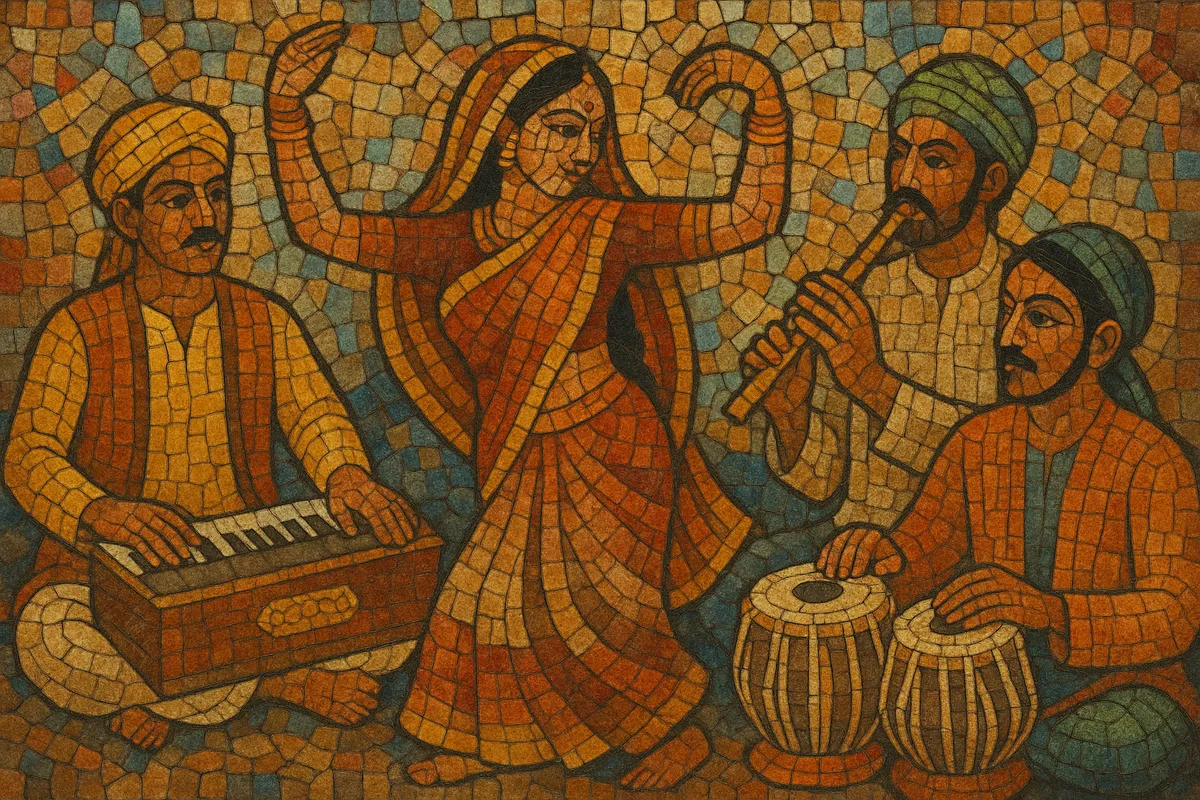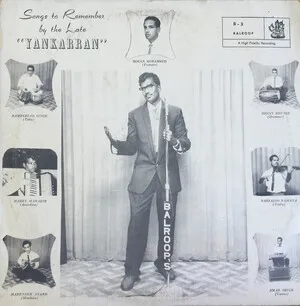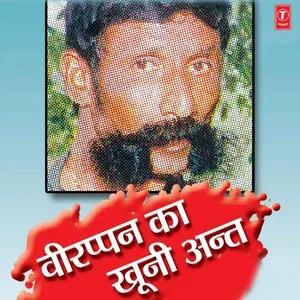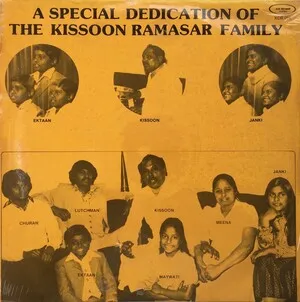Bhojpuri folk music is the traditional song culture of the Bhojpuri-speaking belt of eastern Uttar Pradesh and western Bihar in northern India, with extensions into Nepal’s Terai and long-standing diasporic communities in the Caribbean and Indian Ocean. It accompanies the seasonal and social calendar—harvests, weddings, childbirth, pilgrimages, and festivals such as Holi and Chhath.
Musically, it blends village performance practice with Hindustani light-classical inflections. Common forms include sohar (childbirth songs), vivah/geet (wedding repertoire including bidai/farewell), chaita (spring), kajri (monsoon), phagua (Holi), nirgun (devotional/philosophical), and biraha (improvisatory, often competitive singing). Typical instrumentation features dholak, tabla, manjira, khartal, harmonium, bansuri (flute), and at times shehnai or sarangi; a tanpura or shruti box may provide a drone. Rhythms center on theka patterns like kaharwa (8-beat) and dadra (6-beat), supporting melodic contours that often touch raga families such as Kafi, Bilawal, Pahadi, and Bhairavi.
The genre’s lyrics are vivid, earthy, and direct, using local idiom to portray love, separation, humor, devotion, and migration. Performances frequently involve call-and-response, extempore verses, and a communal, participatory spirit.
Bhojpuri folk music arises from agrarian, domestic, and ritual life in the Bhojpuri heartland. Its forms crystallized across the 18th–19th centuries, codifying repertoires for weddings (vivah-geet), childbirth (sohar), seasonal cycles (chaita, kajri), and devotional expression (nirgun, bhajan-like songs). Semi-classical styles—especially thumri and light Hindustani idioms—filtered into village practice, shaping ornamentation and melodic curves while preserving oral transmission and local dialect.
By the late 19th and early 20th centuries, staged folk theater and narrative song traditions expanded the music’s reach. Biraha, an extempore, often competitive singing tradition, grew in popularity, while folk theater such as Bidesiya (associated with Bhikhari Thakur in the early 20th century) embedded songs into dramatic plots. Gramophone recordings, and later radio, began documenting Bhojpuri songs; the cassette boom of the 1970s–1990s turbocharged circulation, creating local stars and regional markets.
Indentured migration (19th–early 20th centuries) carried Bhojpuri speakers to Trinidad and Tobago, Guyana, Suriname, Mauritius, and Fiji. Their song traditions mingled with Caribbean and Indian Ocean sounds, catalyzing genres like chutney and baithak gana, where Bhojpuri folk meters, melodies, and devotional themes met Afro-Caribbean rhythms and instrumentation. These diasporic styles maintained linguistic and ritual links (e.g., wedding songs, Holi/Phagwa) while innovating dance-band formats.
From the late 20th century, Bhojpuri cinema integrated folk idioms into film songs, and a parallel pop market emerged. While some commercial tracks adopted sensational lyrics, a strong folk-revival current has preserved traditional repertoire and performance ethics. In the 2010s–present, YouTube and social media enabled both preservation—archiving field performances and ritual contexts—and new hybrids, including acoustic revivals, studio folk, and live-band formats for festivals and concerts.
Bhojpuri folk remains a living, participatory practice at weddings, Chhath Puja, village melas, and community gatherings. Its durability rests on communal memory, flexible improvisation, and the expressive power of local language—qualities that continue to inspire both tradition-bearers and contemporary interpreters.
Aim for direct, story-rich lyrics in the Bhojpuri dialect, sung with a conversational yet expressive delivery. Keep arrangements intimate and participatory, allowing for call-and-response between lead and chorus.
Use folk-friendly contours that echo light Hindustani colors—Bhairavi, Kafi, Bilawal, Pahadi, Durga. Employ ornaments sparingly (meend, murki, and light gamak) to keep the folk feel. A sustained drone (tanpura/shruti box) can ground the melody.
Base rhythms on kaharwa (8-beat) and dadra (6-beat). For kaharwa, think an even, danceable cycle; for dadra, a lilting 3+3 sway. Dholak patterns should be assertive but not over-produced; add manjira/khartal for sparkle. Tempo can range from medium (narrative songs) to brisk (dance/celebratory songs).
Use dholak, tabla (lightly), harmonium, bansuri, manjira/khartal; add shehnai or sarangi for wedding settings. Keep textures uncluttered: a small ensemble supports vocals and audience participation. Acoustic timbres are preferred; avoid heavy electronic layers unless doing a respectful folk-pop fusion.
Common structures are sthayi–antara or verse–refrain.
• Start with a short alaap-like pickup or a drum lead-in. • Alternate lead verses with chorus responses. • Allow room for extempore lines, especially in biraha-style performances.Draw from lived contexts: weddings (sohar, bidai), festivals (Holi/Phagwa, Chhath), monsoon (kajri), spring (chaita), devotional/nirgun philosophy, migration, love, humor, and social commentary. Keep imagery concrete and idiomatic, with memorable refrains for audience sing-alongs.
Encourage handclaps and crowd responses. Record vocals close and warm, preserving room ambience. If fusing with pop, retain dholak/manjira as rhythmic anchors and prioritize Bhojpuri diction and folk refrains.





%2C%20Cover%20art.webp)
%2C%20Cover%20art.webp)

